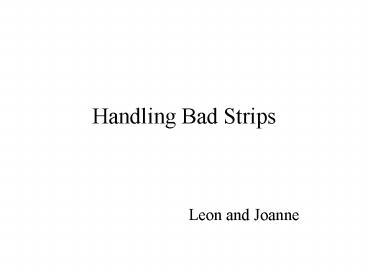Handling Bad Strips - PowerPoint PPT Presentation
1 / 5
Title:
Handling Bad Strips
Description:
The persistent form of the data is an ascii file listing bad strips. ... Format-specific cnv service invokes converter to create or update TCDS information. ... – PowerPoint PPT presentation
Number of Views:19
Avg rating:3.0/5.0
Title: Handling Bad Strips
1
Handling Bad Strips
- Leon and Joanne
2
Requirements
- Use conversion services to get from persistent
(XML) form to TCDS handle updates as event time
increases automatically - Little or no change to existing algorithmic code
required - Allow description to call an entire component bad
or enumerate individual strips (or both).
3
Existing Architecture
data
control
algorithm
algorithm
Tkr Service
The persistent form of the data is an ascii file
listing bad strips. A Gaudi service is
responsible for reading in the file and
maintaining a corresponding in-memory data
structure which algorithms can access
Ascii file
4
Proposed Architecture
data
algorithm
Tkr Service
control
algorithm
TCDS classes
Persistent data is kept in XML files. Each file
is described with metadata. Metadata cnv service
searches for the right dataset. Format-specific
cnv service invokes converter to create or update
TCDS information. Once per event Tkr svc asks for
update. If data has been refreshed, it will then
recreate its own representation. As before Tkr
svc makes data available to algorithms.
Metadata rdbms
Calibration conversion services, converters
XML files
5
To do
- Design (round 2) XML format and TCDS hot/dead
strips classes Joanne - Modify tkr service to fetch TCDS data and
generate something like current data structure
Leon
Everything else (tkr service interface to
algorithms, calibration infrastructure
underpinnings) is done, sort of.

